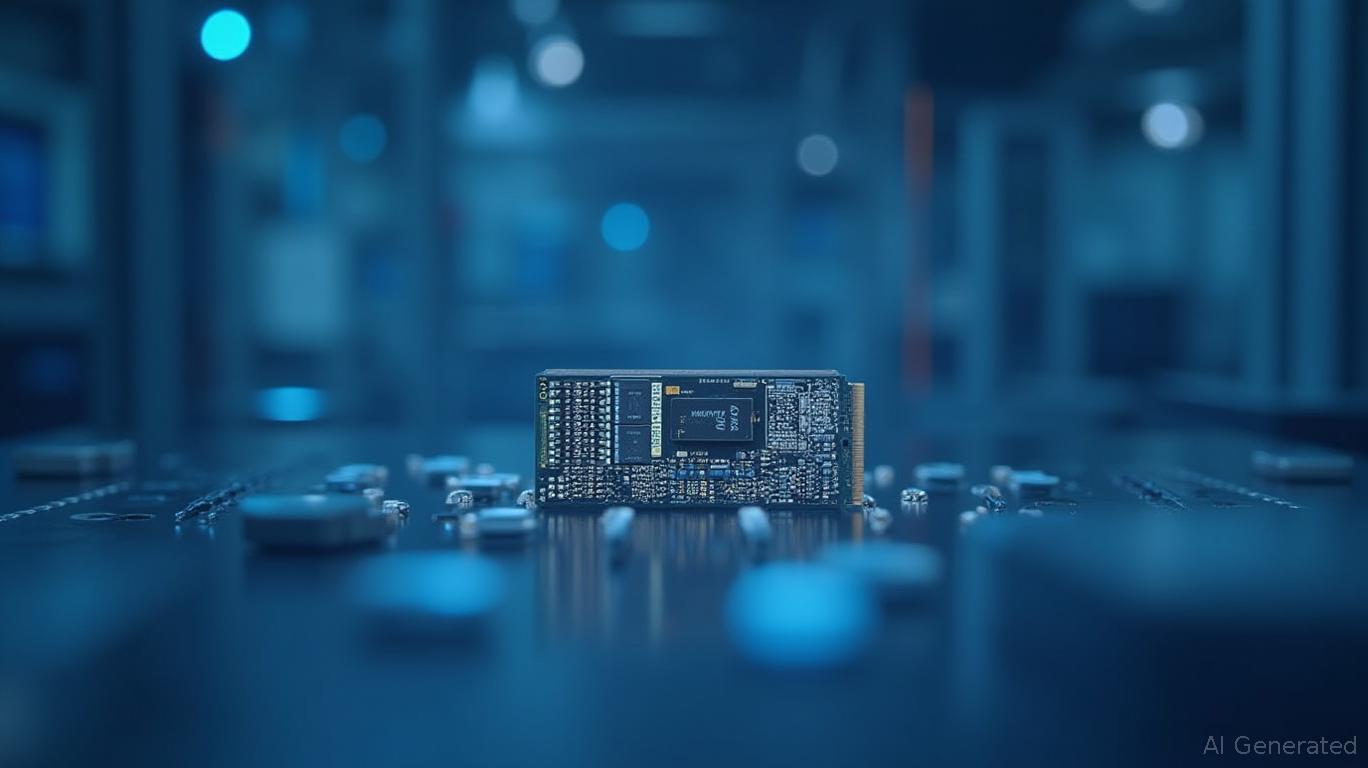The AI Memory Revolution: How Micron is Positioning Itself at the Heart of Semiconductor Growth
The semiconductor industry is undergoing a seismic shift, driven by the insatiable hunger for memory in AI infrastructure. As artificial intelligence and high-performance computing (HPC) applications expand, so too does the demand for specialized memory solutions. Among the companies capitalizing on this trend,
(MU) stands out for its strategic bets on High-Bandwidth Memory (HBM), a technology poised to redefine the memory market's structure. Let's dissect the data behind this transformation and its implications for investors.The AI Infrastructure Gold Rush: Memory as the New Oil
The global memory market reached a record $170 billion in 2024, with DRAM and NAND accounting for $97 billion and $68 billion respectively. But the real growth engine is HBM, a high-speed memory variant critical for AI training and inference.
revenue is projected to nearly double in 2025, hitting $34 billion, and its compound annual growth rate (CAGR) through 2030 is expected to soar to 33%. By the end of the decade, HBM could command over 50% of the DRAM market—a stark contrast to the 3% CAGR projected for conventional DRAM.
This structural shift is already reshaping market dynamics. South Korean rivals SK hynix and Samsung dominate the DRAM landscape, with SK hynix leading with a 36% share in Q1 2025, fueled by its dominance in HBM (70% of its DRAM revenue).
, however, is closing the gap: its HBM gigabit shipments are forecast to hit nearly 20% of the global market by 2025, with HBM revenue surpassing $1 billion in Q2 2025—a 50% sequential jump.Micron's Playbook: HBM3E and the Cloud Memory Pivot
Micron's strategy hinges on two pillars: technical leadership in HBM and vertical integration with cloud giants. Its HBM3E modules, capable of delivering 1.2 terabytes per second (TB/s) of bandwidth, are now being adopted by hyperscalers like
and Google for large-scale AI training. The launch of its Cloud Memory Business Unit in 2024 further underscores its focus on serving the cloud infrastructure boom.
Investors have taken notice. Despite broader semiconductor cyclicality, Micron's stock has outperformed peers since Q4 2024, rising over 40% as HBM revenue streams solidified. Yet challenges remain. Chinese manufacturers like CXMT and YMTC are advancing rapidly, leveraging 294-layer 3D NAND and domestic DDR5 production to undercut prices—a trend that could compress margins unless Micron maintains its premium HBM edge.
Risks and Opportunities in the AI Memory Landscape
The race isn't just about technology; it's also a geopolitical and environmental battle. U.S. export restrictions have slowed Chinese firms' access to advanced chips, but domestic innovation persists. Meanwhile, Micron and its peers are under pressure to adopt energy-efficient designs and circular economy practices to meet sustainability mandates.
For investors, the key question is whether Micron can sustain its HBM momentum while fending off competition. The company's $200 million investment in Arizona's HBM3E fab and partnerships with AI chipmakers like
suggest it's doubling down. If HBM's CAGR materializes, Micron's revenue could see a 25-30% uplift by 2030, far outpacing its traditional DRAM business.Investment Thesis: Riding the HBM Wave
Micron's pivot to AI memory is a high-risk, high-reward bet. The company faces headwinds from Korean and Chinese competitors, as well as macroeconomic uncertainty. However, the structural tailwinds for HBM are undeniable. Investors with a 5+ year horizon could consider
as a core holding in a semiconductor portfolio, particularly if valuations normalize post-recent rallies.
Recommendation: Buy MU on dips below $55/share, targeting a 2025 price target of $75-$80. Historical backtesting shows that purchases made on the first trading day after quarterly earnings announcements have resulted in an average immediate 2.5% decline, with underperformance over the subsequent 60-day holding period. This underscores the importance of timing entries to avoid the initial post-earnings volatility. Investors should also closely monitor HBM adoption rates and geopolitical developments.
Conclusion
The semiconductor industry is entering an era where specialized memory, not general-purpose chips, will drive growth. Micron's early bets on HBM position it to capture a disproportionate share of this $200 billion market. While risks exist, the structural shift toward AI infrastructure makes Micron a critical player—one that investors would be wise to monitor closely.
In the battle for memory's future, speed and bandwidth are the new currencies—and Micron is printing both in abundance.
Data as of June 19, 2025. Past performance is not indicative of future results.

Comments
No comments yet